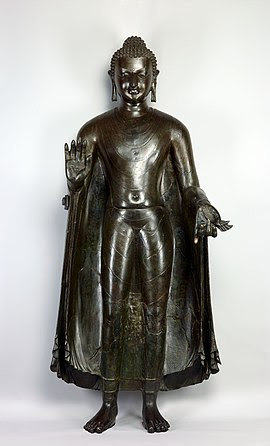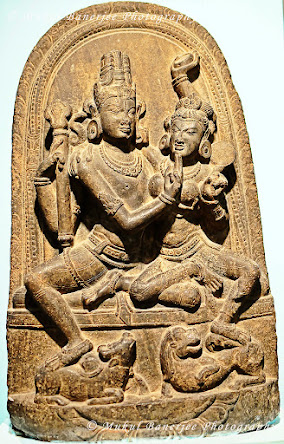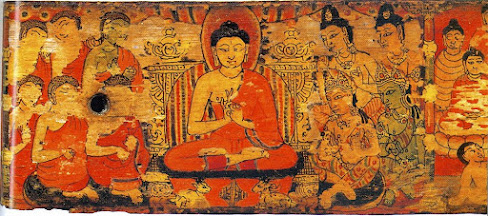BPSC Mains (GS - 1: History)
Art & Architecture - Pala Art
Discuss the features of Pala Art and Architecture and its relationship with Buddhism. (65th BPSC 2020)
Describe the salient features of Pala Architecture and Sculptures. (47the BPSC 2007)
Critically examine the salient features of Pala Art. (43rd BPSC 2001)
Give a description of the main features of Pala Art in Bihar. (41st BPSC 1997)
Approach
- Brief introduction about Pala dynasty
- Features of Pala Art and Architecture under different headings like Sculptures, Architecture and Paintings.
- Its relationship with Buddhism
The founder of the Pala dynasty was Gopal who extended his rule in Bihar and Bengal in the middle of the 8th century. Palas ruled over Bihar and Bengal for a long period of time (from 8th to 12th century).
Apart from being astute diplomats and military conquerors, Pala rulers were also great patron of Art and Architecture. Art and Architecture prospered under the patronage of Palas, and a new style of art developed in the region which is came to be known as Pala school of Art & Architecture.
Features of Pala Art & Architecture -
Pala Art can be categorised under 4 major categories namely -
- Sculptures
- Terracotta figures
- Paintings
- Architecture (Building architecture)
1. Sculptures
- Bronze and Stones were used in making sculptures.
- Bronze sculptures were made/casted by 'Cire Perdue' method (also known as lost wax technique).
- Stone sculptures were mostly made of Black Basalt stone.
- The sculptures were generally ornamented.
- In these sculptures, attention was usually given to show the front of the body. Rear part of the image had been hardly artistically built.
- Pala Sculptures were mainly by Buddhism and different stages of life of Buddha and his various forms such as Manjushri, Bodhisattva, Avalokiteshwara, etc were depicted.
- Apart from Buddhist sculptures, sculptures of Hindu deities were also made.
2. Terracotta figures
- Terracotta figures of Palas were mostly religious in nature though some figures showing day to day life of common people have also been found.
- Both Buddhism as well as Hinduism deities were made. For example - Along with Buddha and Bodhisattva, images of Vishnu, Varah, Sun and Hanuman were also made.
3. Painting
- Two forms of paintings were prevalent during Pala period - Manuscript Painting and Mural Painting (Wall Painting).
- Manuscript Paintings were generally made on palm leaves.
- Pala School of Painting is generally characterised by delicate and nervous lines, sensuous elegance, linear and decorative accent.
- Mural Paintings have been found at Nalanda. It is characterised by beautiful designs depicting flowers made of geometrical shapes and images of animals and humans.
4. Architecture
- Pala Architecture were mostly based on bricks though some stones were also used in construction.
- It was also influenced by religion especially by Buddhism and Hinduism.
- Lots of Stupas, Monasteries, Mahaviharas, Chaityas and Temples were built by Pala rulers.
- For example - Pala ruler, Dharmapala renovated Nalanda University and established Vikramshila University and Odantapuri University. He also built Sompura Mahavihara which is one of the largest mahavihara in India.
- Temples were built in local Vanga style.
- For example - Vishnupada temple of Gaya, Bihar was also built during Palas.
 |
| Vishnupada Temple, Gaya |
Since, Pala rulers were follower of Buddhism, the Buddhist influence can be clearly seen on their art forms. For example - lots of Stupas, Monasteries, Chaityas and Mahaviharas had been constructed by Pala rulers.
One such example is Sompura Mahavihara which is one of the largest mahavihara of India was built by Pala ruler, Dharmapala. He also renovated Nalanda University and donated 200 villages for its maintenance, which was the largest University of that time where Buddhist teachings were taught.
Also, the Pala sculptures were mostly based on Buddhism which included the sculptures of Buddha and its various forms such as Bodhisattva, Manjushri, Avalokiteshwara, Maitreya, etc. Different stages of life of Buddha such as birth, enlightenment, first sermon, mahaparinirvana, etc had been tried to depict in sculptures.
The paintings of Palas also had an influence of Buddhism which can be clearly seen in the paintings preserved in Napal's royal court, Royal Asiatic Society (Kolkata), Kala Bhawan (Kashi), Maharaja Museum (Baroda) and Boston Museum (America).
Apart from Buddhist influence, Pala art and architecture also had an influence of Hinduism and Jainism whereby they created many temples. One such example is Vishnupada Temple of Gaya, Bihar.
Thus, from the above discussion it is clear that Pala Art and Architecture had a clear relation with Buddhism.
Click here, for Mauryan Art & Architecture
Click here, for Patna Kalam
Notes to boost your Preparation
Optional Notes
Note - This is my Vision IAS Notes (Vision IAS Class Notes) and Ashutosh Pandey Sir's Public Administration Class notes. I've also added some of the information on my own.
Hope! It will help you to achieve your dream of getting selected in Civil Services Examination 👍








